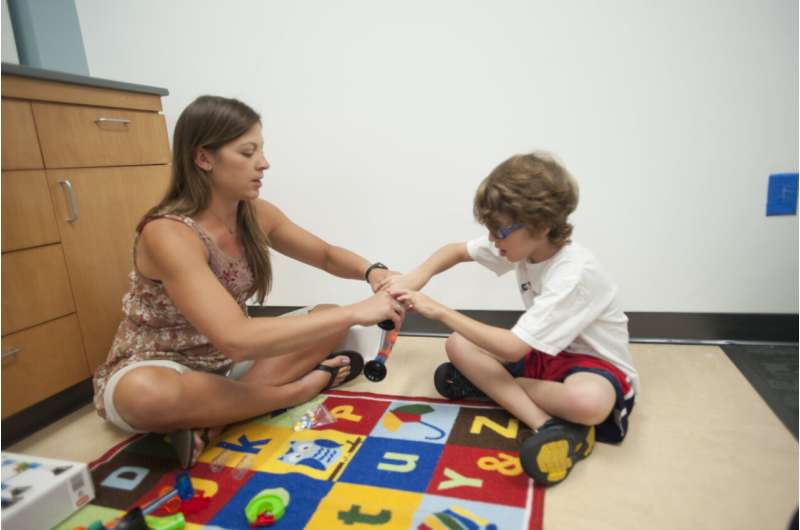This article has been reviewed according to Science X's editorial process and policies. Editors have highlighted the following attributes while ensuring the content's credibility:
fact-checked
trusted source
proofread
Therapy framework reveals promise for intensive pediatric rehabilitation for children with motor disabilities

Virginia Tech researchers with the Fralin Biomedical Research Institute at VTC have demonstrated that children with a wide range of diagnoses that affect their motor function improve after receiving intensive pediatric neurorehabilitation called ACQUIRE Therapy.
The findings were published in June in Behavioral Sciences and will be included in an upcoming special issue of the journal devoted to "shifting the therapeutic paradigm for children with neuromotor disabilities to maximize development."
"We present a great deal of clinical data, and also describe a framework for intensive therapy that we have developed over the last 20 years," said Stephanie DeLuca, associate professor of the Fralin Biomedical Research Institute. "Our research highlights the need for standardized methodologies and training for therapists to maximize the effectiveness of intensive therapies."
The study was authored by Mary Rebekah Trucks and Dory Wallace, both associate directors and therapists at the Fralin Biomedical Research Institute Neuromotor Research Clinic, and clinic co-directors DeLuca and Sharon Landesman Ramey.
The ACQUIRE Therapy was originally developed two decades ago by DeLuca and Landesman Ramey, along with Karen Echols a colleague at the University of Alabama at Birmingham as a form of Constraint-Induced Movement therapy (CIMT).
Since then DeLuca, Trucks, Wallace, and Landesman Ramey have worked together to further develop the ACQUIRE Framework and Therapy Model to become much broader than CIMT.
"The actual moment-by-moment teaching, and the importance of therapists having a dynamic awareness of the environment and knowing how to take advantage of it, are extremely important," said Landesman Ramey, research professor and distinguished research scholar of the Fralin Biomedical Research Institute.
"The science behind the ACQUIRE form of high-intensity training often focuses on the high dosages—the number of hours in therapy every day for several weeks," said Landesman Ramey, who also is a faculty member of the Department of Psychology of the Virginia Tech College of Science. "That is important, but there is much more to it than that."
The new paper includes outcomes from ACQUIRE Therapy provided to children aged 7 months to 20 years with various motor impairments, including hemiparesis and quadriparesis, which describe different degrees of weakness or partial paralysis in the body.
The study findings reveal functional improvements across a wide range of diagnostic categories, including cerebral palsy, stroke, traumatic brain injury, arteriovenous malformation, hemispherectomy, and others.
Because clinical populations are highly diverse, therapy often requires tailored approaches to be effective.
"The ACQUIRE therapy framework and overall model of therapy provides therapists some decision-making guidelines that can be used across diagnoses and differing types of motor impairments" said DeLuca, who is also affiliated with the School of Neuroscience of the Virginia Tech College of Science. "It also provides a platform for providing therapists additional training for implementing these intensive therapeutic approaches effectively."
Looking ahead, the study calls for further standardization of methodologies and decision-making processes in the delivery of intensive therapies to ensure consistent and effective outcomes.
By translating research findings into practice and investing in therapist training, the field of pediatric neurorehabilitation can continue to advance and provide high-quality intensive therapies to children with motor impairments due to brain injuries or disorders, the authors say.
More information: Stephanie C. DeLuca et al, Evidence for Using ACQUIRE Therapy in the Clinical Application of Intensive Therapy: A Framework to Guide Therapeutic Interactions, Behavioral Sciences (2023). DOI: 10.3390/bs13060484


















